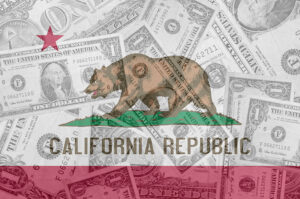With the tax season upon us, understanding the key dates and requirements is crucial. In the United States, including California, the deadline to file both federal and state tax returns is traditionally April 15. However, it’s important to note that California offers an automatic extension until October 15 for filing state tax returns. Despite this extension, all taxpayers are obligated to pay any taxes owed to both the state and the IRS by the April deadline, irrespective of when they file their returns.
Receiving Your Tax Refund: The Timeline
Electronic Filing and Direct Deposit
For those who have already filed or are planning to file their taxes, the anticipation of receiving a refund is high. Filing electronically through the Franchise Tax Board (FTB) and the IRS can significantly expedite the refund process. Typically, taxpayers who choose this method and opt for direct deposit, ensuring their return has no errors or issues, can expect to receive their refund within 21 calendar days.
Paper Filing: Understanding the Delay
Conversely, for taxpayers in California who submit a paper return, the waiting period for a refund can extend up to three months. This is a considerable increase in processing time compared to electronic filing. For federal taxes, filing an amended return or submitting by mail can delay refunds even further, potentially taking four weeks or longer.
Checking Your Tax Refund Status
State and Federal Tools
Both the FTB and the IRS provide tools to help taxpayers check the status of their refunds. To use the FTB’s service, taxpayers need their Social Security number, ZIP code, the exact refund amount, and the numbers in their mailing address (e.g., “1234” from “1234 Main St.”). According to a news release, last year saw approximately 5.4 million requests to the FTB from taxpayers checking on their refunds. The FTB’s website also offers information on current processing times, which as of March 6, indicated a one-month processing time for personal refunds.
The IRS’s “Where’s My Refund?” tool and the IRS2Go app are available for checking federal tax refund statuses. These services require the taxpayer’s Social Security number or individual taxpayer ID number, filing status, and the exact refund amount.
Tips for Avoiding Delays in Receiving Your Refund
Ensuring the accuracy of your tax return and keeping your contact and bank account information up-to-date are crucial steps to avoid any unnecessary delays in receiving your refund. The FTB advises using its online self-service options for various needs, including checking refund status, making payments, determining filing requirements, choosing the correct forms, and viewing processing and wait times. These digital resources aim to streamline the process, having serviced 5.4 million refund status requests in 2023.
Conclusion: Navigating Tax Season with Ease
Navigating the complexities of tax season requires a clear understanding of deadlines, the benefits of electronic filing, and the tools available for checking refund statuses. By adhering to these guidelines and utilizing available resources, taxpayers can ensure a smoother and more efficient tax filing experience, leading to timely receipt of refunds and reduced stress during this annual obligation.


